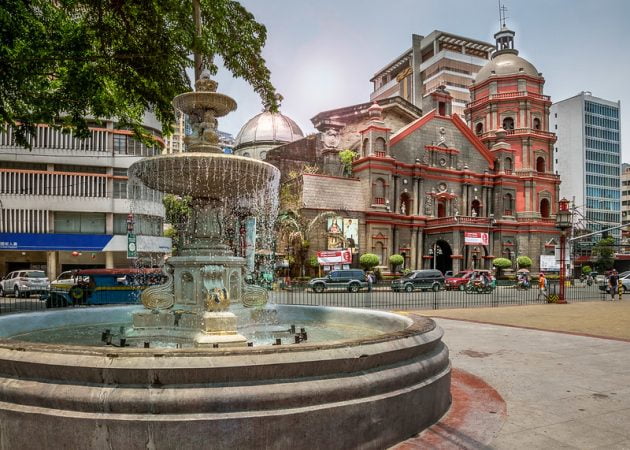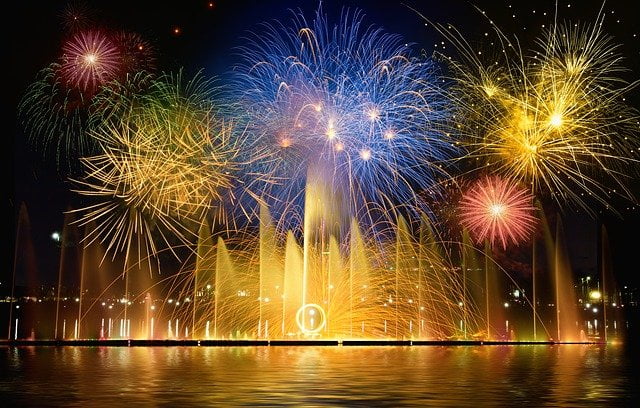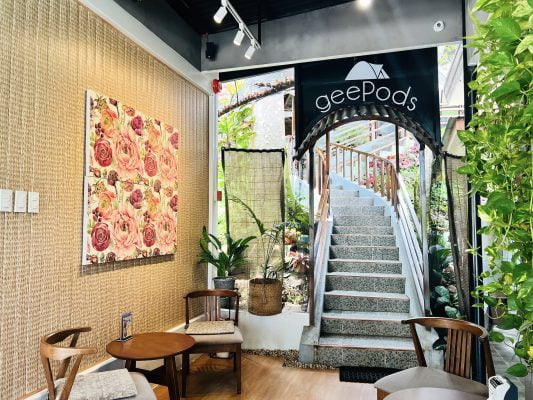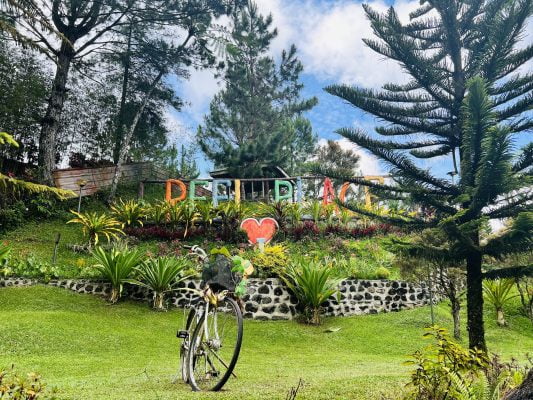Chinese people all over the world celebrate the Lunar New Year, also known as the Chinese New Year. Since the Diaspora, the Chinese have become prominent members of almost every country’s population. In the Philippines, the Chinese have greatly influenced every aspect of Filipino culture.
So is Chinese New Year a holiday in the Philippines? Filipinos celebrate the Chinese New Year with the 1.3M Chinese-Filipinos (locally called Tsinoys). Chinese culture is deeply ingrained in Filipinos. So naturally, they join in the festivities with great gusto. The Philippine government usually declares Chinese New Year as a special non-working holiday.
Chinese New Year is celebrated at the beginning of spring that’s why it is also known as the Spring Festival. The Year of the Water Tiger, 2022, begins on February 1st.

Chinese-Filipino History
Relations between Chinese and Filipinos go way back to the galleon trade. The Asian neighbors made trades of silk, porcelain, sweet potato, and tobacco long before the western conquistadores arrived.
During the Spanish era, the colonizers used China as the trade link between Latin America and the Philippines. Relations have become stronger since then and immigration between both countries began. The Chinese established settlements all over the Philippines and became very important members of society.
Today, Chinese-Filipinos are some of the most influential people across all industries in the Philippines. In fact, the heirs of the late Henry Sy of SM Holdings are the richest in the country. Henry Sy was a natural-born Chinese citizen but his family moved to the Philippines when has was very young. When he died in 2019, Mr. Sy’s estimated net worth was at US$19 billion.

Chinatowns in the Philippines
Manila

The Philippines is home to the oldest Chinatown outside of China established by the Spaniards in 1594. The Chinese have already built strong trade relations with Filipinos even before the Spanish occupation. The Spaniards established Binondo as a settlement for the Chinese Catholics. They made it close enough to Intramuros so they can keep an eye on their enterprising settlers.

With Chinese-run businesses lining its streets, Binondo serves as the center of commerce in Manila. This is also where the festivities of the Chinese New Year in the Philippines begin. Binondo especially comes alive in the days leading up to the Chinese New Year, with side streets lined with booths and pop-up shops selling lucky charms and traditional Chinese food.
Quezon City
Manila may have the oldest but Quezon City has the biggest Chinatown in the world. Quezon City’s Chinatown covers an astounding 600 hectares of prime real estate. This area serves as home to prominent Chinese-Filipinos and their businesses. Established in 2005, Chinese arches mark Quezon City’s Chinatown at the north and south intersections of Quezon Avenue and Banawe Road. Quezon City’s Chinatown is also an official tourism district.
According to statistics, there is a higher concentration of Chinese-Filipino residents in Quezon City than anywhere else in the Philippines. With relations between the locals and Chinese traders dating back before the Spanish occupation, the area is rich with a history marked by buildings, the local culture, and its citizen’s heritage.
Davao City

Davao City is home to the only Chinatown in Mindanao. The area is located at the heart of downtown Davao, covering over 40 hectares and four barangays. Four arches mark Davao’s Chinatown:
- Arch of Friendship in Jones Circle
- Arch of Unity on Magsaysay Avenue
- Arch of Peace at the intersection of J.P Laurel and Sta. Ana Avenues
- Arch of Prosperity along Sta. Ana Avenue and Leon Garcia Street
Davao City has a very vibrant Chinese-Filipino community. There is a good number of Buddhist and Taoist temples in the city as well as Chinese private schools that teach Mandarin to their students. My child, Adie, attends one of these schools and she’s quite fluent in Mandarin. Davao’s Chinatown is a great place to shop for affordable textile, clothing, toys, even food. Notable shopping centers like NCCC, DCLA, and Gaisano Mall are located in Davao’s Chinatown.
Iloilo City

The Ilonggo streets of Aldeguer, J.M Basa, and Iznart make up Iloilo City’s Chinese Triangle. During the Spanish occupation, Iloilo’s economy flourished when the Spaniards allowed trade ships to dock on its shores. This paved the way for the enterprising Chinese to set up shop in the city and liven up the local industries.
The Chinese cultivated opium during the Spanish era with a hundred government-sanctioned opium dens in the city. These dens have since closed since the American occupation. Today, Chinese-Ilonggos flourish in this historic city with large businesses run by Tsinoys. Iloilo City’s Chinatown is marked by the Filipino-Chinese Friendship Arch along Iznart Street.
Chinese New Year Traditions in the Philippines
Chinese New Year all around the world is met with over-the-top festivities. The Chinese are an extremely superstitious people and there are certain traditions and rituals that must be followed when ushering in the new year. In the Philippines, Chinese-Filipinos adhere to a lot of traditions that have a lot to do with luck, prosperity, health, and family ties.
Fireworks

Setting off fireworks is always a part of every big celebration, especially when welcoming a new year. For the Chinese, the loud banging and bright lights of fireworks ward off evil spirits and repel bad luck. Filipinos, even those without Chinese roots, have taken to this tradition during New Year’s Eve.
Accidents involving fireworks are very common during the holidays that Davao City has completely banned firecrackers and other pyrotechnic devices in 2002. It has been 20 years since I have seen actual fireworks in Davao City!
Lion Dance

The Chinese believe that the lion symbolizes wisdom and power and the dragon-like lion plays a big role during the new year. Accompanied by the music of gongs, drums, and cymbals, the lion dance is the highlight of every big Chinese celebration. This traditional Chinese dance not only brings a festive atmosphere but is also believed to usher in good luck and prosperity.
During Chinese New Year celebrations in the Philippines, dancers perform the lion dance is performed in the main streets of Chinatown. The lion goes around collecting ang pao, the red envelopes usually hung at doors or gates. In some places, a dragon dance is also performed.
Ang Pao

Red envelopes, also called ang pao, elicit excitement among youngsters during Chinese New Year. As a tradition, elder Chinese stuff these envelopes printed with Chinese characters with crisp bills and give them away to children and unmarried friends/family. The act symbolizes prosperity and protection for all those involved.
There are certain rules about the amount to be placed inside the ang pao. For one thing, the amount should end with an even number as odd numbers are associated with funerals. Other rules include using brand new notes instead of dirty ones and not using coins.
Technology has enabled the giving away of virtual ang pao through mobile payment applications. This practice may be void of the traditional symbols of luck but the thought is still there.
Horoscopes

Every new year brings the hope of new beginnings, luck, and love. During Chinese New Year in the Philippines, Chinese and western zodiacs come together in the form of horoscopes. These are predictions of one’s outlook for the year in terms of wealth, health, luck, and relationships. Astrologers broadcast horoscopes during news shows, talk shows, over the radio, and print them just about anywhere you can read them.
Filipinos take these predictions to heart and often base their actions on what their horoscopes say. I personally believe in hard work and prayers but I still check my Fire Rabbit/Pisces horoscope when I can. After all, malls install larger-than-life displays of horoscopes in the days leading up to Chinese New Year in the Philippines.
Other Traditions
The Filipino-Chinese practice a lot more traditions during Chinese New Year and throughout the rest of the year. Centuries of Chinese traditions interwoven into local tribal beliefs have made Tsinoys very superstitious. Here are some traditions most Filipino-Chinese families still practice:
- During the New Year’s feast, eat tikoy (sticky rice cake) for unity in the family, fish for good fortune, noodles for long life and dumplings for wealth.
- Wear red and decorate your house with red for happiness, good energy and luck. Do not wear anything tattered or ripped because it attracts bad luck.
- Assemble a prosperity bowl filled with rice, 12 eggs (12 months), seven coins/rolled up bills (7 days of the week) and an orange.
- Do not sweep the floor on New Year’s Day! It will sweep your luck away.
- Open all doors and windows to get good fortune in.
- Make sure your rice container is full to symbolize abundance of food for the entire year.
- Do not take any medicine on New Year’s Day to avoid getting ill the entire year.
Chinese Lucky Charms
Charms play a huge role in Feng Shui, the ancient Chinese tradition of harmonizing elements of one’s life. During Chinese New Year, the streets of Chinatowns become a marketplace for charms, crystals and amulets said to bring good fortune (good luck) or ward off evil (bad luck).
Here are seven of the most popular charms people buy during Chinese New Year in the Philippines:







- Red Envelopes for prosperity and protection
- Chinese Emperor coins for financial luck
- Laughing Buddha for happiness
- Fortune cat for success in business
- Three-legged money toad for wealth and protection for the family
- Pi Yao (worn as bracelet charms) for protection against evil and negative energy
- Lucky Bamboo for wealth, health, happiness and longevity
There is no doubt that Chinese traditions are deeply ingrained in Filipino culture. So it’s no surprise that Chinese New Year is a holiday in the Philippines. Everyone, even those without Chinese roots, celebrates the Lunar New Year with great gusto in hopes of attracting the luck the Chinese people seem to always have. The deep friendship between Filipinos and Chinese remains to this day and is something to celebrate itself.
Kung Hei Fat Choi, everyone!






